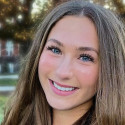Science communication under the microscope
The process of science is not complete until the results of research are communicated. For a long time and for many researchers, the act of communicating research was geared primarily to other scientists.
Today, however, there is increasing awareness that communicating to the public — sharing not only results but the context of research — is essential if the scientific community is to successfully engage society.
Now, those science communication efforts will be under the national microscope as the National Academy of Sciences (NAS) this week (May 21-22) hosts a Sackler Colloquium on “The Science of Science Communication,” an exploration of the challenge of communicating science increasingly contextualized by political, cultural and ethical nuances.

Scheufele
“We know from decades of media effects research that most of us learn about science, or form attitudes about technologies like stem cell research or nanotechnology, from media,” notes Dietram Scheufele, a University of Wisconsin–Madison professor of life sciences communication and an organizer of the colloquium. “And we don’t just learn about the science. We find out how politicians feel about developments in science and how these discoveries and technologies influence our daily lives.”
The colloquium is intended to survey the “state of the art of empirical social science research on science communication,” a biopsy that Scheufele and others argue will help inform not just the cadre of professional science communicators, but policy makers, science agencies and foundations, and, importantly, scientists themselves.
“Science communication is not different from any other area of science,” says Scheufele, himself a highly regarded researcher of science communication. “We need to turn to the experts and carefully examine what empirical findings tell us about what works and what doesn’t work.”
The colloquium will feature many of the leading science communication researchers from the United States and Europe. In addition to Scheufele, UW–Madison’s Dominique Brossard, also a professor of life sciences communication, will participate, giving a talk on research focused on where people get their information about science and how they evaluate it.
“We live in a highly technological society, which is evolving very rapidly and with many choices to be made at the policy level,” Brossard says. “Science communication is a crucial element of citizen engagement. What we are finding is that people are getting more and more of their information online and from a variety of sources.”
And that information, she notes, is often contextualized by feedback from readers, reposting to Facebook with comments, blog commentary and the other filters of the online environments where people look for credible information.
Scheufele believes that those who routinely communicate science, as well as scientists, policy makers and leaders of federal agencies and foundations have a sincere interest in effective communication.
However, “a lot of surveys also show that we don’t do an equally good job connecting science with all the members of the public, often creating widening gaps in understanding between people with higher levels of formal education and those with less,” he explains. “And that is not a good thing.”
The colloquium is intended to spark a dialogue between journalists and other science communicators, policy makers, leaders of scientific organizations and the community of researchers that studies science communication. “Embedding the dialogue in cutting-edge social scientific research is one of the core purposes of the colloquium,” says Scheufele.



